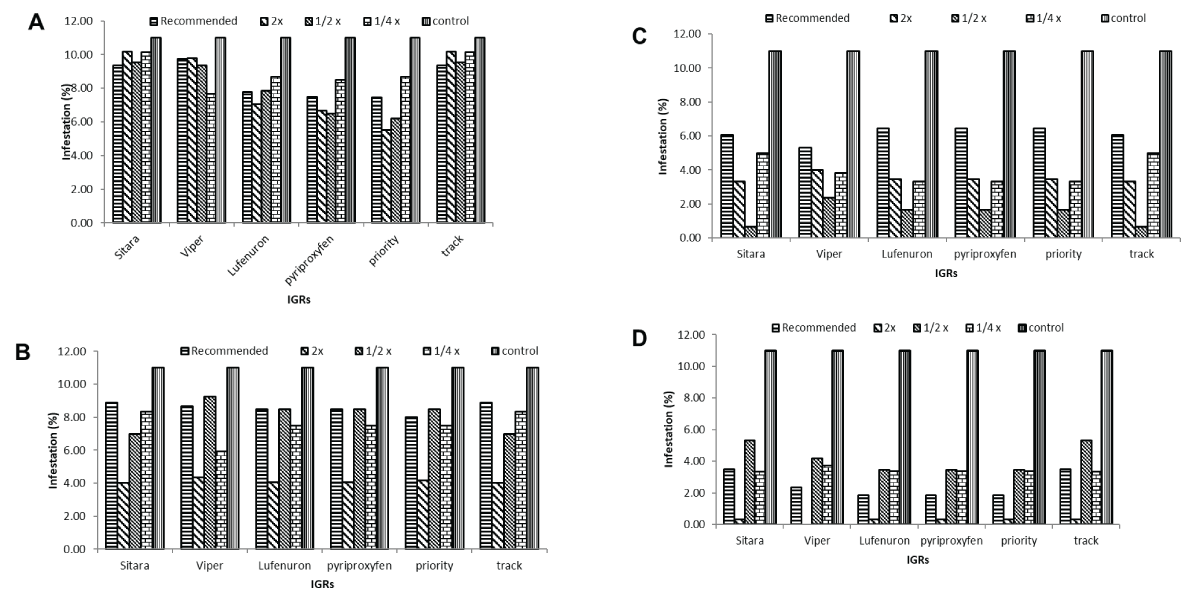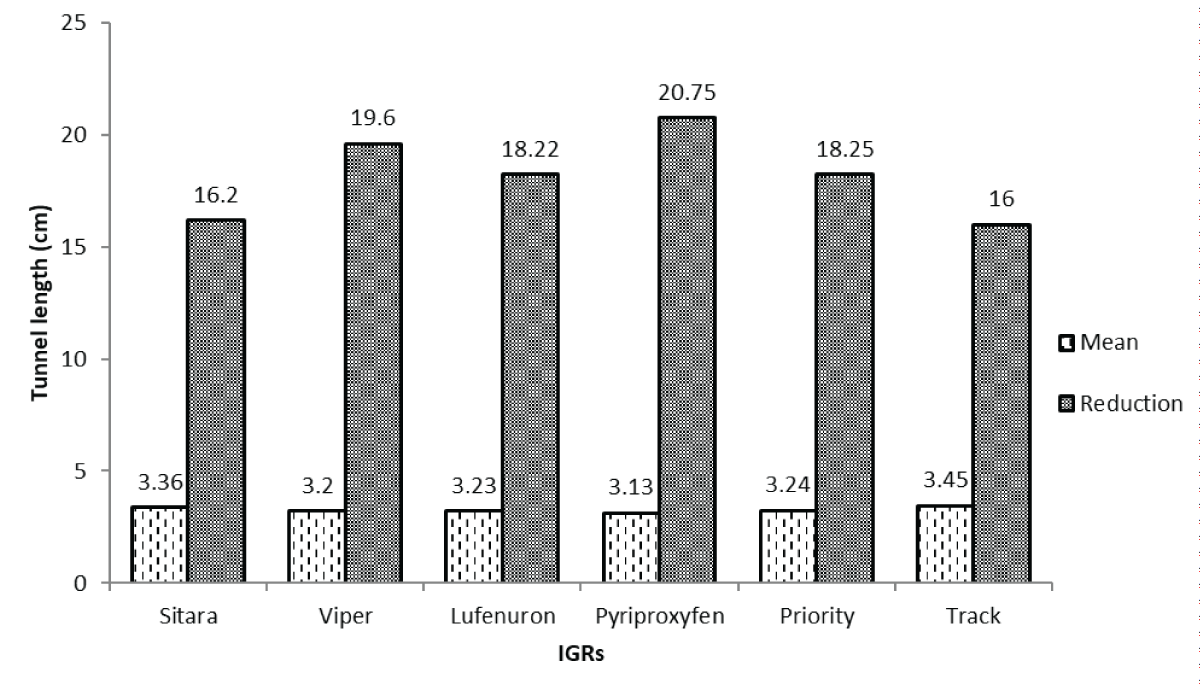Effectiveness of Various Concentrations of Insect Growth Regulators (IGRs) Against Maize Stem Borer Infestation
Introduction
Maize, a critical crop for global food and feed production, faces numerous challenges, particularly from pest infestations. The maize stem borer (Chilo Partellus) is among the most significant threats, capable of reducing crop yields by up to 80%. The research study “Efficacy of Different Concentrations of Insect Growth Regulators (IGRs) on Maize Stem Borer Infestation” delves into the effectiveness of various IGRs in managing this pest, offering insights for sustainable pest control in agriculture.
Key Highlights of the Study
IGRs as a Sustainable Solution: Unlike conventional pesticides, insect growth regulators (IGRs) disrupt the development and reproduction of pests while being less harmful to beneficial insects. The study evaluated several IGRs, including Lufenuron®, Pyriproxyfen®, Sitara®, Viper®, Track®, and Priority®.
Field Experiment Design: The experiment was conducted in a controlled field setting using a randomized complete block design (RCBD) to assess the impact of different IGR concentrations on maize stem borer infestation. Data were collected at 3, 7, and 14 days post-application to track the efficacy and residual impact of the treatments.
Results and Observations:
- The study found that higher concentrations of IGRs (1/2x and 2x the field-recommended dose) showed the most significant reduction in infestation.
- Pyriproxyfen® and Priority® at doubled concentrations proved to be the most effective, achieving an infestation reduction rate of up to 96.71% by the 14th day post-treatment.
- The study emphasized that while all tested IGRs demonstrated some degree of effectiveness, optimal results were achieved with specific concentration adjustments.
Implications for Agricultural Practices
The findings underscore the importance of integrating IGRs into comprehensive Integrated Pest Management (IPM) strategies. By leveraging reduced-risk pesticides such as IGRs, farmers can effectively manage pest populations without the adverse environmental and resistance-building effects associated with traditional pesticides. This approach contributes to more sustainable agriculture and enhances crop resilience.
Challenges and Future Considerations
While the study presented promising results, it also highlighted the need for careful consideration of IGR application rates to balance efficacy and environmental safety. Future research could focus on long-term effects, potential resistance development, and compatibility with other pest management practices.
Conclusion
The use of IGRs represents a promising shift toward safer, more sustainable pest control in maize production. This study provides valuable guidance on the effective use of IGRs and underscores their role in safeguarding crop yields while minimizing ecological impact.
Read More: Access the complete study for detailed insights here: Full Text | PDF
Tags: #MaizeProtection #PestManagement #IGR #SustainableAgriculture #CropYield #IntegratedPestManagement #MaizeStemBorer #AgriculturalResearch

Impact of different concentrations of insect growt...

Comparison of insect growth regulators (IGRs) on m...
